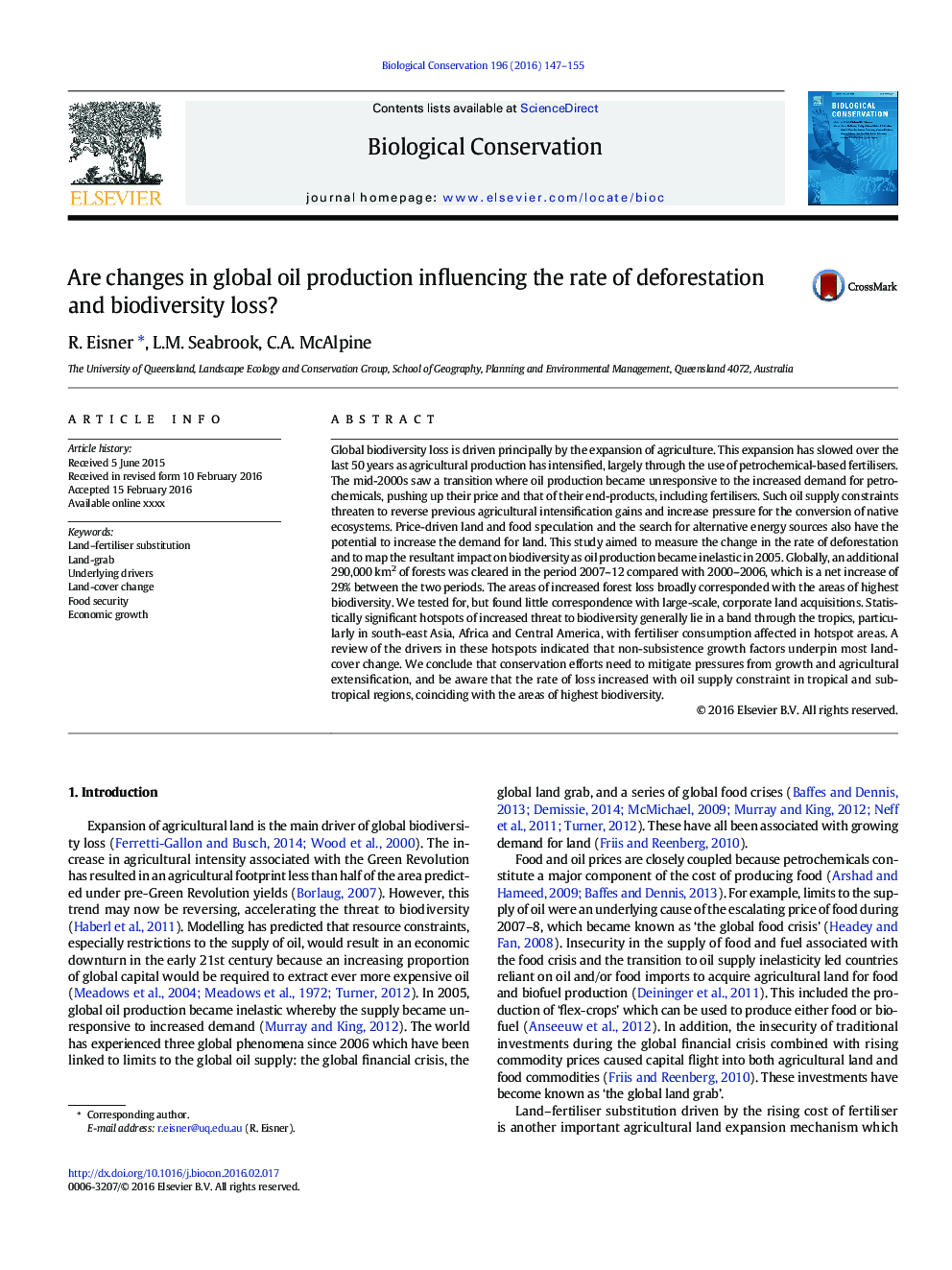| کد مقاله | کد نشریه | سال انتشار | مقاله انگلیسی | نسخه تمام متن |
|---|---|---|---|---|
| 6298495 | 1617905 | 2016 | 9 صفحه PDF | دانلود رایگان |
عنوان انگلیسی مقاله ISI
Are changes in global oil production influencing the rate of deforestation and biodiversity loss?
ترجمه فارسی عنوان
آیا تغییرات در تولید جهانی نفت بر نرخ جنگل زدایی و از دست دادن تنوع زیستی تأثیر می گذارد؟
دانلود مقاله + سفارش ترجمه
دانلود مقاله ISI انگلیسی
رایگان برای ایرانیان
کلمات کلیدی
جایگزینی کود لاند؟ گرفتن زمین، درایورهای اصلی، تغییر سطح زمین، امنیت غذایی، رشد اقتصادی،
موضوعات مرتبط
علوم زیستی و بیوفناوری
علوم کشاورزی و بیولوژیک
بوم شناسی، تکامل، رفتار و سامانه شناسی
چکیده انگلیسی
Global biodiversity loss is driven principally by the expansion of agriculture. This expansion has slowed over the last 50Â years as agricultural production has intensified, largely through the use of petrochemical-based fertilisers. The mid-2000s saw a transition where oil production became unresponsive to the increased demand for petrochemicals, pushing up their price and that of their end-products, including fertilisers. Such oil supply constraints threaten to reverse previous agricultural intensification gains and increase pressure for the conversion of native ecosystems. Price-driven land and food speculation and the search for alternative energy sources also have the potential to increase the demand for land. This study aimed to measure the change in the rate of deforestation and to map the resultant impact on biodiversity as oil production became inelastic in 2005. Globally, an additional 290,000Â km2 of forests was cleared in the period 2007-12 compared with 2000-2006, which is a net increase of 29% between the two periods. The areas of increased forest loss broadly corresponded with the areas of highest biodiversity. We tested for, but found little correspondence with large-scale, corporate land acquisitions. Statistically significant hotspots of increased threat to biodiversity generally lie in a band through the tropics, particularly in south-east Asia, Africa and Central America, with fertiliser consumption affected in hotspot areas. A review of the drivers in these hotspots indicated that non-subsistence growth factors underpin most land-cover change. We conclude that conservation efforts need to mitigate pressures from growth and agricultural extensification, and be aware that the rate of loss increased with oil supply constraint in tropical and sub-tropical regions, coinciding with the areas of highest biodiversity.
ناشر
Database: Elsevier - ScienceDirect (ساینس دایرکت)
Journal: Biological Conservation - Volume 196, April 2016, Pages 147-155
Journal: Biological Conservation - Volume 196, April 2016, Pages 147-155
نویسندگان
R. Eisner, L.M. Seabrook, C.A. McAlpine,
